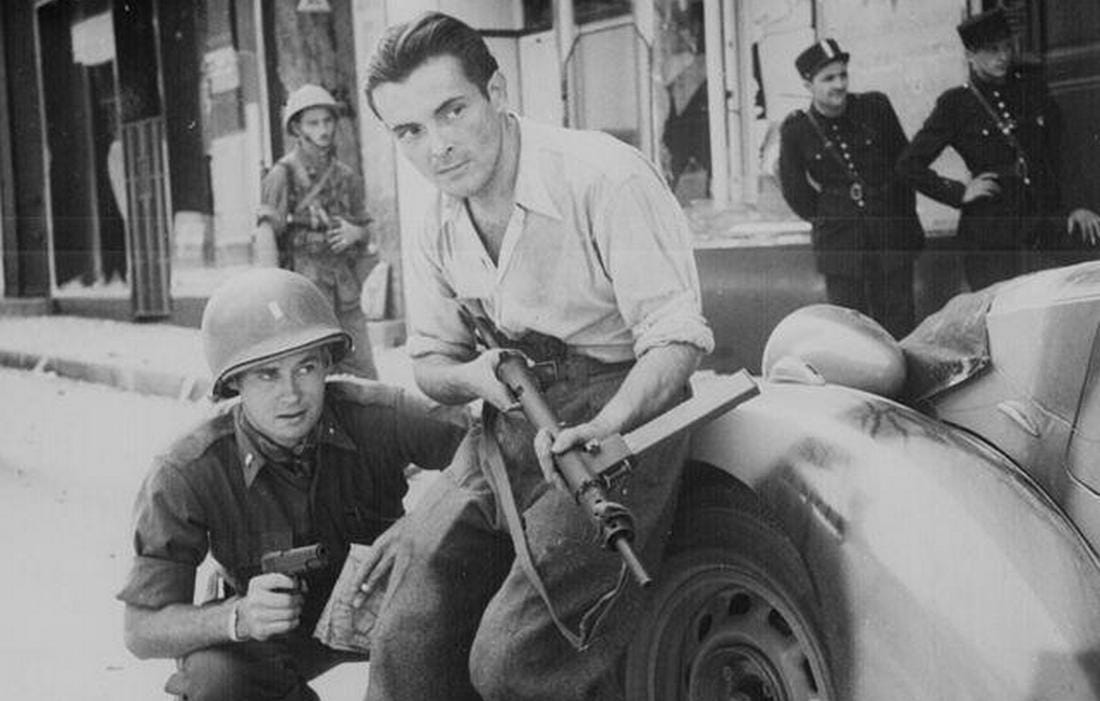Paul Huard
Oct 14
But it worked—most of the time
You wicked piece of vicious tin!/Call you a gun? Don’t make me grin./You’re just a bloated piece of pipe./You couldn’t hit a hunk of tripe./But when you’re with me in the night,/I’ll tell you, pal, you’re just alright!
—“Ode to a Sten Gun,” by S.N. Teed
Few weapons in the modern era ever had a poem penned its honor. But few weapons were ever like the Sten gun.
Hastily contrived in the early, desperate days of World War II, it looked like a last-ditch effort to arm British troops—and it was.
Terrified Britons knew they did not have enough weapons to repel a German invasion force. The British lost thousands of small arms that were destroyed or simply abandoned after the devastating rout at Dunkirk.
Bolt-action rifles from the Great War and hunting guns were often the only firearms available for some units. The British Army purchased every Thompson submachine gun it could acquire from the United States, but demand soon outpaced supply once the U.S. entered the war.
But two British weapons designers—Maj. Reginald Shepherd and Harold Turpin—worked together to create a simple, blowback-operated submachine gun that could be quickly and cheaply made from machined steel.
The Royal Small Arms Factory at Enfield produced a prototype—take the “S” from Shepherd, the “T” from Turpin and the “EN” from Enfield and you have the weapon’s name.
Produced in both Great Britain and Canada starting in 1941, the Sten was often quickly welded together, the slag filed off and the completed gun then thrown in a pile with others of its kind. However, the Canadian weapons often had better production quality, with smoother edges and better tolerances.
It took about five man-hours to make one weapon and the Sten cost about $10 to produce—about $130 a weapon today when you account for inflation.
The Thompson, which was the gold standard of submachine guns at the time, was beautifully made but exceptionally expensive. In today’s dollars, it cost an eye-popping $2,300 per weapon to produce.
Both countries manufactured more than four million Sten guns during World War II. In addition, partisan groups with access to machine shops often cranked out their own Sten gun copies because it was so easy to make.
It weighed seven pounds empty, nine pounds with a loaded magazine of 28 to 30 rounds. If kept clean and well-maintained it could be an excellent weapon capable of devastating fire.
Firing more than 500 rounds per minute—sometimes more, depending on the version—designers chambered the Sten for the nine-millimeter Parabellum round, which was the most commonly used pistol round in European militaries. When pressed, a stud allowed the gunner to select semi-auto fire as well.
The choice of bullet was inspired. Users of the Sten usually had no trouble obtaining ammo for the gun wherever they used it, particularly if they raided German stocks of ammunition.
Tens of thousands of Stens were parachute-dropped to partisans in Europe and Asia for use against the Germans and Japanese. Suppressed versions of the weapon were also available for covert operations.
Still, descriptions of the Sten often were downright insulting. Some of the more printable epithets include “The Woolworth Special,” “The Plumbers Delight” and “The Stench Gun.”
You couldn’t blame the soldiers for calling it names. It looked like it was assembled from bits and pieces found in a hardware store—in fact, some of the Sten’s essential parts in early models such as springs were originally obtained from hardware manufacturers rather than from gunsmiths.
Early versions also had two annoying habits. Jamming—common when the magazine lips were damaged or the weapon was dirty—or firing uncontrollably in full auto when simply bumped or jostled.
However, the Sten improved with age, particularly after the British invasion panic subsided and weapons were made with an eye toward better craftsmanship.
It also gained a deadly reputation. Lightweight, compact and even concealable, it was a favorite of British airborne and glider-borne forces.
Alan Lee, a member of the Parachute Regiment during the war, said the weapon was best used for close-quarters combat. In a section of 10 men in the Paras, Lee said, the sergeant and corporal always carried a Sten gun, as did most of the officers.
“When you went into a village or went into a house, whatever it was, it was a reliable weapon,” he said in a video interview that is part of an oral history of World War II compiled by the National Army Museum in London. “It wasn’t a reliable instrument for anything over 100 yards, but for anything close-quarters it was very reliable.”
But the Sten gun’s habit of jamming led to one of the messiest covert operations of the war. Czech agents trained and supported by the British Special Operations Executive carried Stens as their weapons during Operation Anthropoid, the mission to assassinate Reinhard Heydrich.
Heydrich was the mastermind of the Final Solution and the S.S.Obergruppenführer responsible for the formation of the special squads that carried out the genocidal killing of Jews in Nazi-occupied territory. Nicknamed “The Butcher of Prague,” he systematically wiped out Czech culture and the Czech resistance in an effort to “Germanize” the nation.
In 1942, as Heydrich traveled in an open-top Mercedes, a Czech SOE agent leveled his Sten gun at the Nazi at point-blank range and pulled the trigger—and the gun jammed without firing.
The agent’s counterpart then tossed a grenade into the vehicle, horribly wounding Heydrich … who died a few days later of blood poisoning.

No comments:
Post a Comment